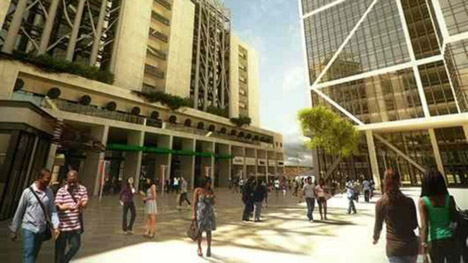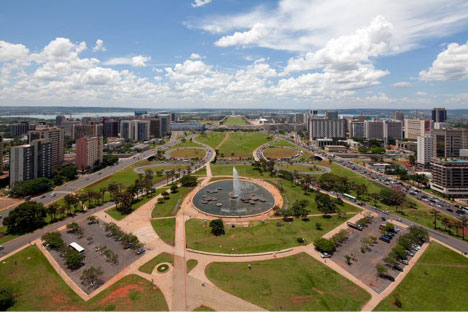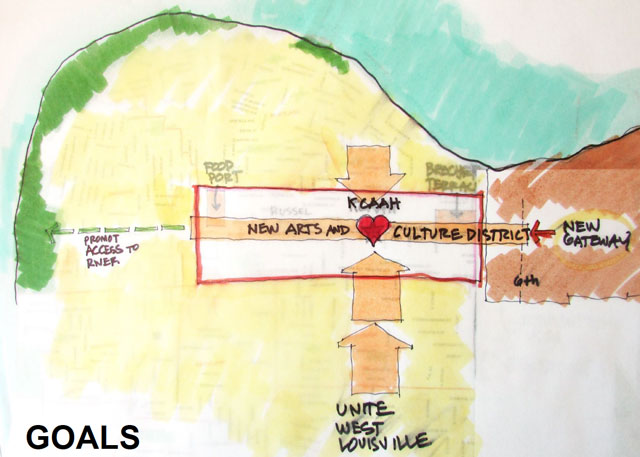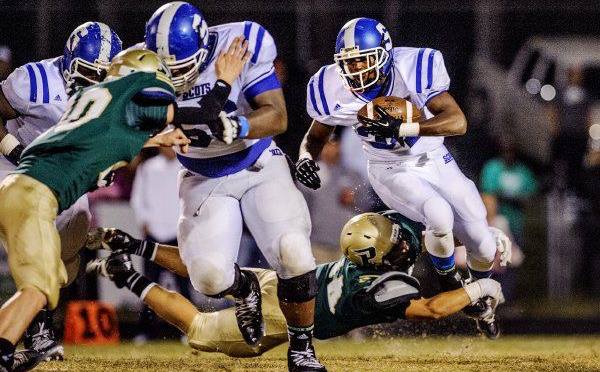-Michael R. Hicks, Webmaster
For a little over a year now, Narrow The Gap! has committed to being an information resource and providing the people of Louisville a perspective and focus on West Louisville places and spaces. We have strived to be a resource and provide tools, solutions and data that you have never seen on a consistent basis from a Black-owned and operated community institution. We have certainly had great media in the past committed to bringing information to the Black people of Louisville, some of the oldest Black-focused publications in this country come from here. That said, we have not had it in modern digital media so we at NTG! has brought it to the community on a local grassroots basis.
I have engaged in dozens, hundreds of conversations in 2015 with mentors and peers. These conversations have taken place in the hoods of West Louisville, the larger spaces of Metro Louisville at-large and the international spaces of the inter webs and social media with acquaintances, business partners, good friends, and other voices less than that. The result of all of this dialog has helped me to come to some new conclusions. Looking at all of this as a hard, cold analysis…there is no interest or political will to address the plight of “the Abandoned” (as Eugene Robinson described them) of the Black, left-behind urban poor. You are talking about a population of people that have been collectively deprived so and trapped in a negative cycle of “the pit.” The pit of incarceration and the effects that mass incarceration has had on the perception of Black people.
We are looking at social problems that will take multigenerational solutions! How much collective damage is incurred when your father was in jail, you live in a community where lots of other fathers are in jail, the kind of negative exposures that a kid has that significantly increase the chances of incarceration…and so on. It is compound deprivation. As Coates asserts, there are no national solutions, much less healthy discussions on what we can do as a nation to deal with these damages. Social media blather about parenting and individuals acting better without any context and acting like people went crazy and things went to hell overnight is no solution for the history already happened…but it is a logic that feeds the perceptions about Black people that allow the pit to remain durable and resistant to solutions of justice.
As Ta-Nehisi Coates described, “the effect of mass incarceration is that employers tend to regard young Black men with high school diplomas as if they were white men with criminal records.” Another effect of incarceration is that it makes you ineligible in certain states for public housing and food stamps, it prevents you from getting jobs like barber or septic tank cleaner or mortician.
One thing that continues to be forgotten when some of our elders wax nostalgic of the strong, Black communities in the days of segregation: Black crime has always been higher than white crime rates and this has been true since the days of emancipation. It is also true that since at least the 1890s (when the efforts of white racial terrorism had their effect and Jim Crow was the de facto law of southern lands) Black elites have decried Black crime and criminals and they were the progenitors of respectability politics — the belief that Black Americans could prove their American-ness and first-class citizenship through virtuous action and behavior. More on this in the future.
To those say that discussions such as this only seem to embrace victimhood and helplessness, I would like to turn that argument around. I counter that it is the description of a problem so entangled and intractable that the American state has no honest national solution that can undo the generations of historical damage, the collective social engineering, underdevelopment and historical and contemporary individual and systemic maltreatment. This has created a dilemma that will and can only be addressed with internally-focused prescriptions. Constant work has to be put in to encourage individuals to work to pull themselves out of their plight with indigenous institutions committed to providing the resources to help people have some bootstraps. This is not a contradiction. The pain that Black folk endured was protracted and had a negative collective effect. However, the solutions happen individual by individual and family by family — the proverbial “Door of Opportunity” can only be walked through one person at a time. It starts with the Want, then the Will, then the Work to step through that door to a welcoming open hand and resources and support at the other side of the door.
The plight of the American Black poor is unique. And extraordinary. And the product of design, of social engineering, of the will to maintain white supremacist power. Coates describes Americans making the mistake (including Black folk) of thinking the Black ghetto was like any immigrant ghetto…no. The Black ghetto was shaped by federal policy. These neighborhoods are socially engineered. This is not a product of willful segregation, of Black people just wanting to live around other Black people.
There is policy over time, and this policy has rendered predominantly Black neighborhoods across America poorer. How it has entrenched deprivation. A deprivation that cannot solely be pinned on Democratic-run municipal and state government, but certainly aid and abetted over the years by legislators of both parties, whether it was the will to be “tough on crime” or the cowardice of not resisting the framing and accepting and voting for policy which continues the pit. Mass incarceration and the historical problems of redlining and housing discrimination has aggravated problems and created challenges of bad policy behavior. These behaviors are durable. Stubborn. Seemingly intractable.
Okay, it’s messed up. What do we do? How do we start?
What can we even begin to do? Outreach to individuals. Vigorous support of Black-owned businesses, and community-focused nonprofits and institutions. This country lacks the collective will to talk about policy, and we as a nation will not get closer to having the courage to do so until the national demographics significantly change. Given that reality, in the meantime and between time, get focused on community projects that build and do for self.
We are going to have to continue to deal with this piecemeal with individual outreach and support because the national will does not exist to even acknowledge the legitimacy of these discussions much less actively make effort to do something about them on a national level. So let us let the description of this past be our prologue to some fresh discussions.
How Do We Get There From Here?

Do you want to know where this image above of Black folk walking around an urban development comes from? That is a mixed-used development being done in South Africa as we speak. As things are happening and being built in other urban areas around the world, we can make these moves as well. The Want, the Will, and the Work. Step through that door and use your resources.
The only way to make Black lives matter is through empowerment of Black people to live quality lives. This is through economic development and gaining power to influence others and ourselves in promoting a culture and quality of life among our people while having global respect to do global trade. Honestly. This is the core and everything else becomes a side show and distractions from the core.
In order for African Americans to have genuine progress, we must look for successful patterns and practices worldwide and apply these solutions to our situation.

Building Garden Cities. Now check these examples out. Notice how Brasilia in Brazil made an expansive green space the center of the city with mid-density buildings off to the sides? This model provides for a concentrated local economics where people do not have to travel far to shop and use local resources. The model also allows for beautiful options for shopping, taking a walk, jogging, biking or roller blading.
Now let’s take it a step further, just as one community institution in particular has started doing. Can you hold outdoor events like a concert festival or farmer’s markets or even a night market for the local community? Can you see all of the economic opportunities for startups and micro-entrepreneurs? For mid-size businesses and industries? Can you notice something else? The open green spaces and wide areas for walking means people can go out and mingle with each other and have more opportunities to connect and engage with each other? This is a beautiful use of green space for people in the name of building happy, healthy places to live without spending a lot of money or driving everywhere.
This is going to involve serious changes and it might be the case that someone from China or Dubai comes in to architect the garden city (it helps to get people who are experienced in actually doing these things in other areas around the world). Then you issue bonds and who will buy those bonds? China and Dubai’s new money wealthy can be more inclined to buy in. What is the point of begging bigots in America who despise you and resists and refuses to support any and every good thing that you seek to do? If we can get Chinese or Arab or African or Hispanic moguls to fund our projects, build them statues and name wings after them and let’s keep it moving!

Consolidate in Cluster Grids. Just like a game of Sim City, consolidate the schools, a hospital and city services in their own clusters. Create economic clusters and industries next to each other to attract investments and innovations and quality residents who can pay the tax coffers. One of the primary things West Louisville neighborhoods need are wealth and educational attainment repatriation. This will help transform Metro Louisville as a whole into having better services and providing the city a more international and cosmopolitan look as a place of innovation.
Black folk have to realize that we must take back our own communities to reverse the effects of historic policy that neglected West Louisville neighborhoods rather than lifting the city up. African Americans must accept responsibility that our apathy and not working collectively for group politics and the failure of not doing group economics has harmed our neighborhoods and our people. We have to look over what we have done, then look into the faces of our children and commit to not let them live through the same mistakes our current generation experienced. We have got to have and provide for them empowered communities and we have a right to a quality of life.
The African American community never had “participatory design” regarding our communities and over how our own communities should suit us. This is what makes the LCCC project, Vision Russell, and the FoodPort committee processes potentially beneficial where people can make the effort to have more of a say and make a change from the way business has tended to be done in predominantly Black American communities. Back to the Brasilia example, the planners invested in people, not cars for the infrastructure. They built a bus system and a bike system around people to move around.
With any of the multiple plans and projects going on in the West End, the focus has be on participatory design and investing in African Americans. Black folk have been exploited in our communities and this city has a spotty history in the effort to invest in the people. Even in the midst of all of these projects, the last thing that the people need in West Louisville are exploitive entrepreneurial bigots building up stores in our neighborhoods and not hiring Black people from the community to do construction or work in them…but then expect us to shop at these stores once they are built. There must be an investment in people and serious engagement in participatory design.
It is our generation, me and you, that are going to have to be the first in generations to not only invest in our communities but perhaps the first ever to seek participatory design of those communities so people in those areas can be proud they contributed to their community development. This works worldwide and it will work in our communities and it’s time from us as a people to invest in us as a people. Save your shekels and pull out your checkbooks — build or invest in smart Black-owned business projects.
Narrow The Gap! consistently proposes for us to invest in ourselves – to invest in communities that serve the people, to invest in entrepreneurs to drive economic development in those communities, invest in our culture and community to enjoy a quality of life, feeling of freedom and vision for bigger and better things for us and future generations. How can we get started?
Safety and Security. One of the critical things we cannot be naïve about is making sure the Black community is safe. We have to have a community and strategy response to deal with criminals, gangs and ignorant Black people and we will reveal more of this over and in due time. We have to make sure we create safe places for people to walk and move around, create well-lit areas at night and make sure we have systems in place like re-energized neighborhood and community block watch clubs to not only alert of crime happening in real time, but use physic engines in smart cameras and land-based surveillance drones to detect community threats. It is 2015, we need to deal with that.
It is important that our teens, our young people get to enjoy their life and have the chances to fulfill the opportunities for their righteous hopes and possibilities. If we have to create more venues like mini-arenas or playgrounds for them to play sports, express themselves creatively through dancing or skateboarding or performing then we have to do that and more. Support what we have and build more as necessary.
My man Ed Dunn at our kin site Dream and Hustle has articulated this clearly and broken it down. Check out all of the original work for your continued study. In the meantime, I am going to summarize and share the effort and vision of some of the work here:
Invest in Our Entrepreneurs

First of all, it doesn’t take a lot of money to kickstart Black businesses in some communities that can make a big impact. The challenge comes in getting people on board with how we need to start small and plan big at the same time when we launch future global empires to create future Black billionaire moguls who will run things worldwide.
Right now, the first low-hanging fruit is technology. My people at Dream and Hustle already have this covered. We need to invest in smart entrepreneurs and the way we need to invest is to start offering training and materials for aspiring businesspeople to build upon. With technology, our young brothers and sisters can setup mobile money to manage currency movement throughout our community controlling our funds among ourselves to spend and empower ourselves.
An important second step is distribution and logistics and this is a worldwide effort. At every opportunity, we have to go worldwide and setup connections for import/exports directly to our neighborhoods. We can setup a Costco-like group buying from major manufacturers with warehouses in Atlanta and Los Angeles and Oakland and be around two to three hours away from every African-American metropolitan area to distribute to retailers.
Third comes in manufacturing and craftsmanship where we invest in Black entrepreneurs to manufacture goods for export to other countries. The goal is to create demand for our goods and create manufacturing jobs as well as create more wealthy people coming from the hood. We can invest in African entrepreneurs to setup flagship showroom stores in America displaying clothing lines or other designer lines. Recognize that Africa is going to be the new money in the 21st century.
Invest in Us
We have to invest in creating quality Black lives, happy lives in Black communities. This is through cultural events and exhibits as well as entertaining venues that are permanent. These are of course the micro-museums and the micro-arenas but there is more. There are properties such as the original Quinn Chapel building on 9th and Chestnut Streets that are crying for proper development. We have to look at some of these stretches of abandoned lots in West Louisville as an opportunity to create new 21st century iconic places in these neighborhoods for brothas and sistas to pretty much hang out.
The Harajuku and Shibuya are hangout spots for Tokyo youth and this is another example of a built site that helps brothas and sistas create culture. This is also where we create our own media channels including IPTV and also a live broadcast center similar to the major broadcasters we can report community news, showcase local talent and advertise local businesses and events. I often hear in our community that we need more stories talking about the good things that go on here. We must make the spaces to allow the better PR and marketing to flourish and happen!
Also, we need to promote Black love in the Black community and that means have places for brothas and sistas to be together and fall in love and stay in love and do things as a loving couple. There’s too much negativity and obsession with Black man/woman drama and conflict. As these communities get redeveloped, let us be conscious about building community that encourage people to meet, mingle and hopefully fall in love without all the foolishness that gets in the way of Black relationship building and maintenance.
Even more, we have to invest in education both online and centers of learning where we can go learn how to hustle using the Internet and also collaborate on righteous hustles.
We need 21st century versions of what Dunn describes as “The old school workshop spot where we can learn to cut wood or cut metal and next thing you know, we learned to put ragtops on our cars and now putting TV screens in our back seats and pimping our rides. That is the kind of collaborative educational culture we are looking into as we invest in ourselves.”
Forward Progress

Can’t apologize and won’t apologize for loving people of African descent. Can’t and won’t apologize for loving the neighborhoods that make up what we call “West Louisville” and wanting to see them heal and flourish and do well. We deserve a better quality of life and flourishing, healthy neighborhoods.
As it is, the billions of dollars poor Black neighborhoods need across America isn't coming around the corner. Although many, many neighborhoods and the communities of people within them have been neglected and abandoned for decades, the reality is that the national political will and interest simply does not exist, and probably will not until America has major shifts in its national demographics. To get this done for ourselves, we are going to have to be the start of our solutions. To make it happen, we have to take a step back, look at the big picture and create a long-term strategy for West Louisville to invest in the people and do it from a place love and respect.
The cries of justice that has been made manifest through the national protest of the #BlackLivesMatter movement has drawn much attention, attention that is vital for education, awareness and reform. However, there is a large danger that the cries for justice and protest in the street substitutes for the heavy lifting that is going to be needed to turn around troubled neighborhoods in Black America and especially the ones in West Louisville. There is a danger of mealy-mouthed excuse-making that we make for ourselves. Again, as unjust as it can be on its face, there are no national solutions that is going to materially improve the conditions of the Black Abandoned in hoods. Even if Washington’s politicians wanted to as a whole (and they do not), there are few laws that can be passed that will bring about immediate, sweeping change.
The bottom line is that there is a human-controlled factor that will allow us to regain healthy control of our communities. There is a real way to deal with the issues of poor Black neighborhoods in a Pareto Principle sort of way — working on a 20 percent element of a problem that will speak to 80 percent of a solution.
Human beings have access to the greatest amount of information and potential knowledge in human history. Use it. Ed Dunn and his research and development teams learned through taking free online courses at MIT about micro-enterprises in Africa is that you have to get the people to participate in the solution and have them drive the solution. When they are part of being the solution, they invest in it and will help you to make it happen. That is the way that we have got to approach our people and our community to do for self.
Are you ready for Black-created, Black-focused, Black-owned solutions? Let’s set the long term vision to build up West Louisville with solutions designed by and for our communities and people.

